The weather has turned for the better this week and has become much drier and there has been a bit of light frost at night which has helped to dry out some wet paddocks.
Met Éireann predicts that the dry weather will continue into the weekend and it will become milder as well.
This dry weather will allow farmers on dry farms to continue grazing or get stock back out to finish grazing the remaining paddocks of the year.
The milder weather should see grass growth figures stay above 10kg DM/ha for the rest of the week, which is quite good for this time of year.
Many farmers are reporting excellent re-growths on paddocks closed in October. This is not surprising considering October saw mean temperatures well above long-term averages.
For those of you who are still grazing, don’t be tempted to re-graze paddocks that have been closed. They will be invaluable next spring.
However, if you have a paddock that hasn’t been grazed since September with a huge cover (>2,000kg DM/ha) you should try and get this grazed.
If the likes of that paddock is left sitting over the winter, it might die back and result in bare patches next spring. The dry weather now may provide a chance to get some lime spread where pH results have come back low (soil pH should be between 6.2 and 6.5).
If you are planning to grow more grass next year, have a look at your soil fertility first. New grass seed varieties will not last in poor-fertility soils. Get a soil test done and go from there. The Irish Farmers Journal Youtube channel has a video uploaded explaining how you should go about taking accurate soil tests.
Grazing conditions have improved, giving farmers a chance to get the last paddocks grazed off.Group dry cows based on body condition score and calving date, targeting extra supplementation to thin cows.Feed the best-quality round bales indoors first if cows are indoors full-time and still milking. Supplement late spring calvers and high yielders with 4kg to 5kg of meal with the grass silage.Watch condition score of younger animals. Aidan Lawless, Farm Manager, Johnstown Research Farm
We have an autumn-calving herd here split into a feed-to-yield and a flat-rate feed system. There are four cows left to calve out of 80. Calving went well with no real issues and it was great that the majority of cows calved out-doors.
Breeding will start on 15 December. At the moment we are recording heats and will do a pre-scan to make sure cows are in good order before calving. We will use genomic bulls with EBI over €150 for fertility and good production traits.
The cows have been indoors full-time for the past 12 days. The closing cover on the grazing block was 600kg DM/ha (200kg DM/LU). The paddocks were cleaned out well because we followed milking cows with dry cows. Both groups of cows are on the following initial diet: 9.5kg DM silage (74.5 DMD and 25% dry matter), 6kg DM maize silage, 2.2kg of a 20% blend (barley, distillers and soya). For the feed-to-yield group, once cows produce more than 22 litres, they get 0.5kg of concentrate per litre up to a maximum of 10kg. The flat-rate cows just get 5kg in the parlour no matter what they are yielding. It is too early to give consistent yields for both groups of cows as they are only settling down to their new diets. In total, they are producing 27 litres at 4.30% fat, 3.58% protein (2.1kg MS) and 160 SCC.
Donal Patton, Farm Manager, Ballyhaise Research Farm
We currently have an average farm cover of 694kg DM/ha. There is one paddock to be grazed out this week that got flooded two weeks ago. It has a cover of 1,300kg DM/ha and with on/off grazing will be gone by the end of the week. We got other paddocks that were flooded grazed off and surprisingly no real damage was done. These paddocks can’t be carried over because they usually flood and go brown. We had two paddocks with covers of 1,700kg DM/ha and they will be carried over because they’re on good dry ground. The last growth rate was taken on Monday and we recorded 8kg DM/ha/day.
Soil temperatures have dropped since the weekend here and are at 6°C, so growth rates will be very low now. We are still milking 80 out of 120 cows, but 20 more will be dried off today. We were drying off low yielders and young cows, but now it’s by calving date and cow condition. Silage quality is ranging in the mid-60s for DMD and 25-27DM. The cows are producing 10.6 litres, 5.17% fat and 3.84% protein (0.98kg MS) and 205,000 SCC on 2kg concentrate. The cows will be dried off in the next two weeks and will be dosed for fluke and worms. We will dose again in January with Zanil to cover adult and rumen fluke. This year, the cows have produced 420kg of milk solids and have received 580kg of concentrates. We have grown 16 tonne of grass dry matter.
Pat O’Neill, Cooraclare,
Co Clare
I dried off all the cows on 8 November because of quota. They remained grazing for two days after drying on a restricted diet of grass. I used Cepravin dry cow tube and a teat sealer. The cows are indoors since and were put on poor-quality bales of silage. The silage quality will be improved from now on and cow condition is very good because cows were dried off so early.
Grass growth has been good for the month of November here and I would say it averaged 20kg DM/ha/day. I will do a farm walk at the end of the week to get a better handle on where covers are, but I expect they will be fairly strong and this should stand to me next spring when cows are going out to grass after calving. Breeding went well this year and only three cows out of 75 turned up not in calf.
Two heifers out of 21 showed not in calf, which is a little disappointing as usually it is one. The Munster Health check (a bulk milk test through the co-op) gave me a rundown of the health status of my herd. I will dose the cows with Albex this weekend to treat them for worms and I will give cows a pour-on for lice.
Next week, cows will be treated for liver fluke with Fasinex 240. It has been a super year for grass growth and I got a lot of paddocks on the grazing platform cut for baled silage.
Alan Poole, Gorey,
Co Wexford
We have 13 autumn calvers and some empty cows that will be milked through the winter and then the spring calvers will start. There are 11 cows calved out of the 13 and of these, four are heifers and seven are bulls. I hope the spring ratio is better. The spring calvers start calving from 5 February until 16 April.
At the moment, there are 30 cows milking between autumn- and spring-calved cows. They are milking 14.25 litres at 4.53% fat, 3.38% protein (1.16kg MS), 4.88% lactose and 94,000 SCC. The cows are on a diet of grass silage ad-lib and the autumn calvers are getting 10kg of an 18% nut while the spring calvers are getting 2.5kg.
Silage quality is not the best and dry cows are being fed pit silage that is 60 DMD while the milking cows are getting the 68 DMD silage bales. The silage is getting sprinkled with some minerals.
There are eight cows left to be dried off and this will happen in a fortnight. That will mean there will be 24 cows milking over the winter. I had 60 cows milking in the summer. This year, I decided to shorten the breeding season in order to have a more compact calving spread. This resulted in 12 cows not going in-calf, but this short-term loss should mean better production in the future. Winter milk suits my system because my land is intersected with public roads which makes getting to grass difficult.
The weather has turned for the better this week and has become much drier and there has been a bit of light frost at night which has helped to dry out some wet paddocks.
Met Éireann predicts that the dry weather will continue into the weekend and it will become milder as well.
This dry weather will allow farmers on dry farms to continue grazing or get stock back out to finish grazing the remaining paddocks of the year.
The milder weather should see grass growth figures stay above 10kg DM/ha for the rest of the week, which is quite good for this time of year.
Many farmers are reporting excellent re-growths on paddocks closed in October. This is not surprising considering October saw mean temperatures well above long-term averages.
For those of you who are still grazing, don’t be tempted to re-graze paddocks that have been closed. They will be invaluable next spring.
However, if you have a paddock that hasn’t been grazed since September with a huge cover (>2,000kg DM/ha) you should try and get this grazed.
If the likes of that paddock is left sitting over the winter, it might die back and result in bare patches next spring. The dry weather now may provide a chance to get some lime spread where pH results have come back low (soil pH should be between 6.2 and 6.5).
If you are planning to grow more grass next year, have a look at your soil fertility first. New grass seed varieties will not last in poor-fertility soils. Get a soil test done and go from there. The Irish Farmers Journal Youtube channel has a video uploaded explaining how you should go about taking accurate soil tests.
Grazing conditions have improved, giving farmers a chance to get the last paddocks grazed off.Group dry cows based on body condition score and calving date, targeting extra supplementation to thin cows.Feed the best-quality round bales indoors first if cows are indoors full-time and still milking. Supplement late spring calvers and high yielders with 4kg to 5kg of meal with the grass silage.Watch condition score of younger animals. Aidan Lawless, Farm Manager, Johnstown Research Farm
We have an autumn-calving herd here split into a feed-to-yield and a flat-rate feed system. There are four cows left to calve out of 80. Calving went well with no real issues and it was great that the majority of cows calved out-doors.
Breeding will start on 15 December. At the moment we are recording heats and will do a pre-scan to make sure cows are in good order before calving. We will use genomic bulls with EBI over €150 for fertility and good production traits.
The cows have been indoors full-time for the past 12 days. The closing cover on the grazing block was 600kg DM/ha (200kg DM/LU). The paddocks were cleaned out well because we followed milking cows with dry cows. Both groups of cows are on the following initial diet: 9.5kg DM silage (74.5 DMD and 25% dry matter), 6kg DM maize silage, 2.2kg of a 20% blend (barley, distillers and soya). For the feed-to-yield group, once cows produce more than 22 litres, they get 0.5kg of concentrate per litre up to a maximum of 10kg. The flat-rate cows just get 5kg in the parlour no matter what they are yielding. It is too early to give consistent yields for both groups of cows as they are only settling down to their new diets. In total, they are producing 27 litres at 4.30% fat, 3.58% protein (2.1kg MS) and 160 SCC.
Donal Patton, Farm Manager, Ballyhaise Research Farm
We currently have an average farm cover of 694kg DM/ha. There is one paddock to be grazed out this week that got flooded two weeks ago. It has a cover of 1,300kg DM/ha and with on/off grazing will be gone by the end of the week. We got other paddocks that were flooded grazed off and surprisingly no real damage was done. These paddocks can’t be carried over because they usually flood and go brown. We had two paddocks with covers of 1,700kg DM/ha and they will be carried over because they’re on good dry ground. The last growth rate was taken on Monday and we recorded 8kg DM/ha/day.
Soil temperatures have dropped since the weekend here and are at 6°C, so growth rates will be very low now. We are still milking 80 out of 120 cows, but 20 more will be dried off today. We were drying off low yielders and young cows, but now it’s by calving date and cow condition. Silage quality is ranging in the mid-60s for DMD and 25-27DM. The cows are producing 10.6 litres, 5.17% fat and 3.84% protein (0.98kg MS) and 205,000 SCC on 2kg concentrate. The cows will be dried off in the next two weeks and will be dosed for fluke and worms. We will dose again in January with Zanil to cover adult and rumen fluke. This year, the cows have produced 420kg of milk solids and have received 580kg of concentrates. We have grown 16 tonne of grass dry matter.
Pat O’Neill, Cooraclare,
Co Clare
I dried off all the cows on 8 November because of quota. They remained grazing for two days after drying on a restricted diet of grass. I used Cepravin dry cow tube and a teat sealer. The cows are indoors since and were put on poor-quality bales of silage. The silage quality will be improved from now on and cow condition is very good because cows were dried off so early.
Grass growth has been good for the month of November here and I would say it averaged 20kg DM/ha/day. I will do a farm walk at the end of the week to get a better handle on where covers are, but I expect they will be fairly strong and this should stand to me next spring when cows are going out to grass after calving. Breeding went well this year and only three cows out of 75 turned up not in calf.
Two heifers out of 21 showed not in calf, which is a little disappointing as usually it is one. The Munster Health check (a bulk milk test through the co-op) gave me a rundown of the health status of my herd. I will dose the cows with Albex this weekend to treat them for worms and I will give cows a pour-on for lice.
Next week, cows will be treated for liver fluke with Fasinex 240. It has been a super year for grass growth and I got a lot of paddocks on the grazing platform cut for baled silage.
Alan Poole, Gorey,
Co Wexford
We have 13 autumn calvers and some empty cows that will be milked through the winter and then the spring calvers will start. There are 11 cows calved out of the 13 and of these, four are heifers and seven are bulls. I hope the spring ratio is better. The spring calvers start calving from 5 February until 16 April.
At the moment, there are 30 cows milking between autumn- and spring-calved cows. They are milking 14.25 litres at 4.53% fat, 3.38% protein (1.16kg MS), 4.88% lactose and 94,000 SCC. The cows are on a diet of grass silage ad-lib and the autumn calvers are getting 10kg of an 18% nut while the spring calvers are getting 2.5kg.
Silage quality is not the best and dry cows are being fed pit silage that is 60 DMD while the milking cows are getting the 68 DMD silage bales. The silage is getting sprinkled with some minerals.
There are eight cows left to be dried off and this will happen in a fortnight. That will mean there will be 24 cows milking over the winter. I had 60 cows milking in the summer. This year, I decided to shorten the breeding season in order to have a more compact calving spread. This resulted in 12 cows not going in-calf, but this short-term loss should mean better production in the future. Winter milk suits my system because my land is intersected with public roads which makes getting to grass difficult.






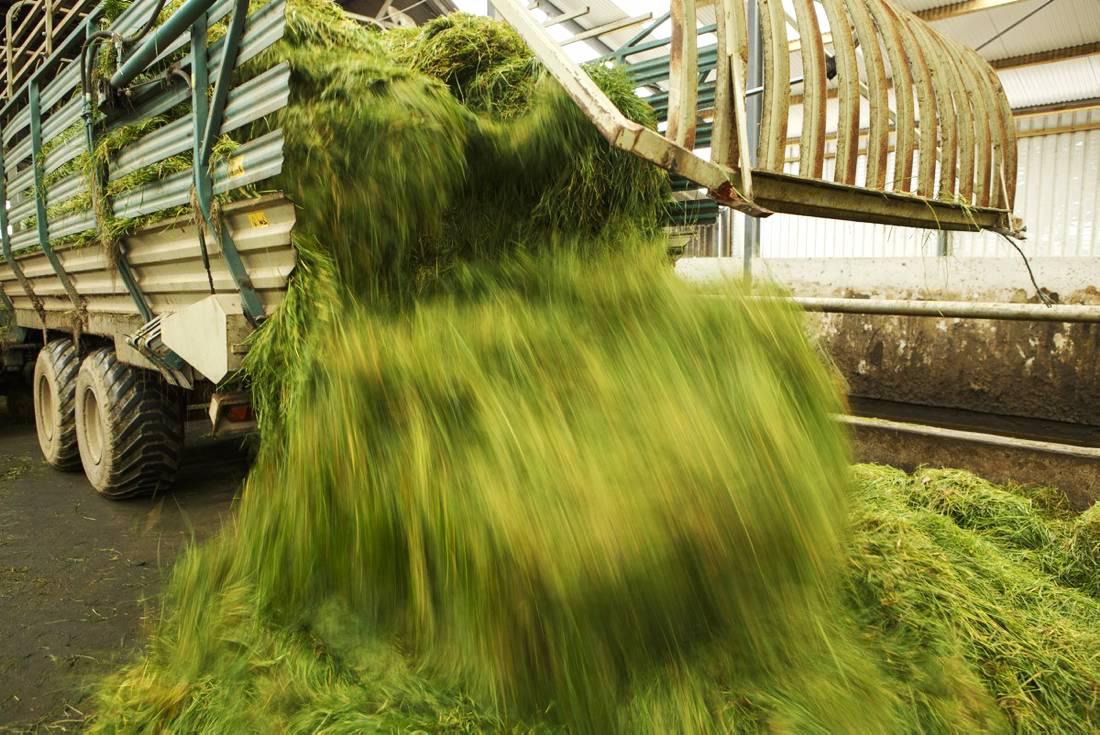
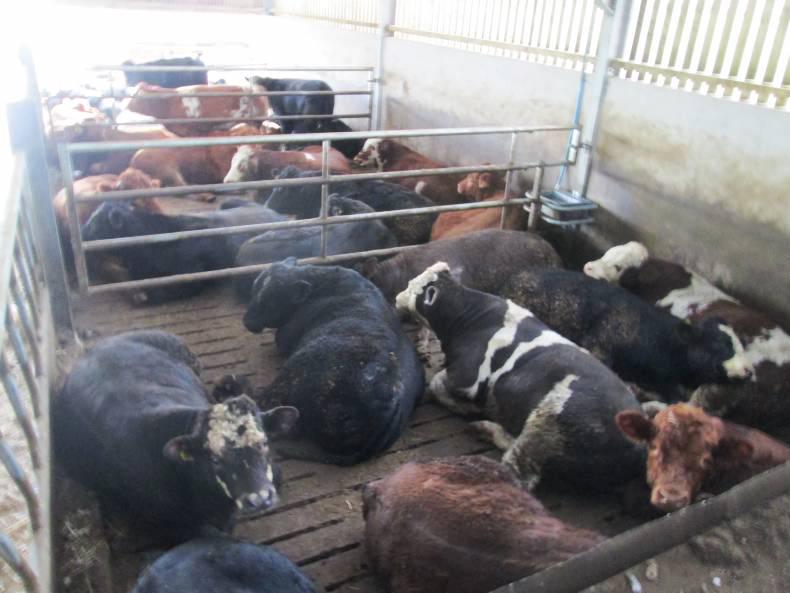

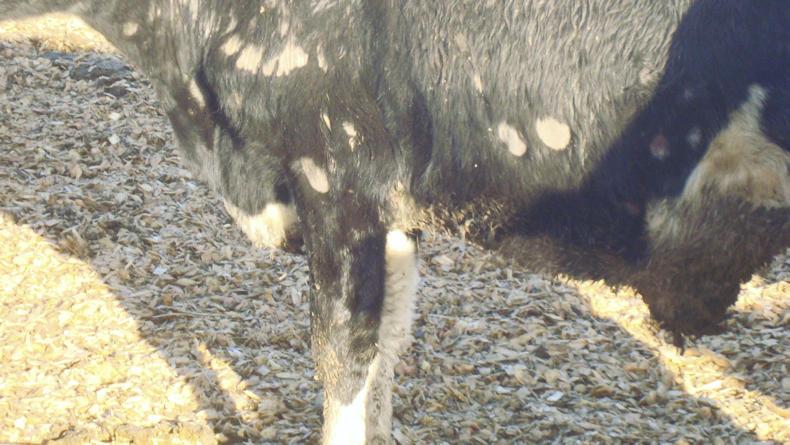
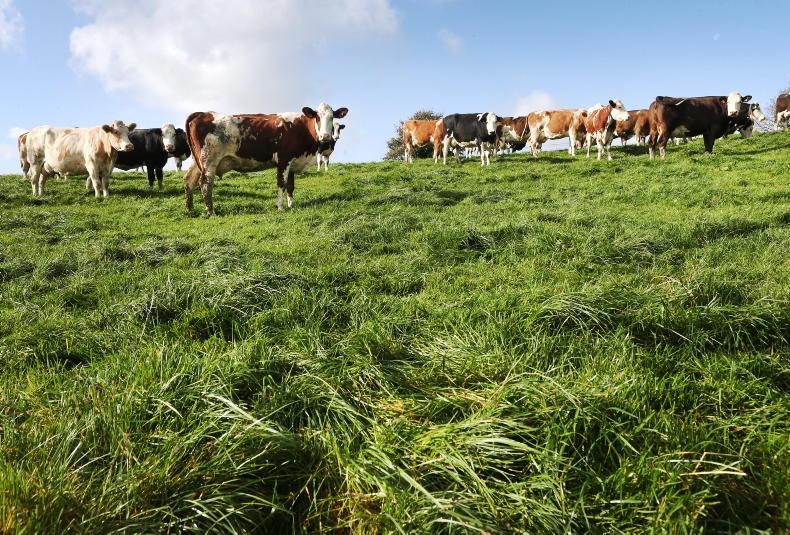
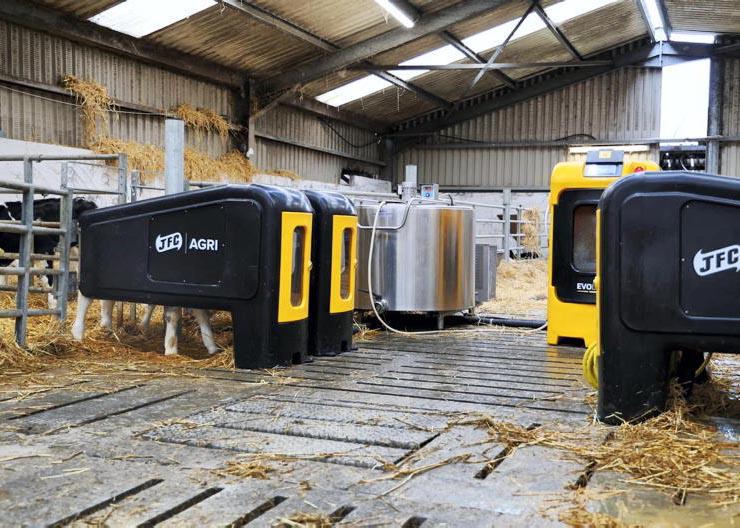
SHARING OPTIONS